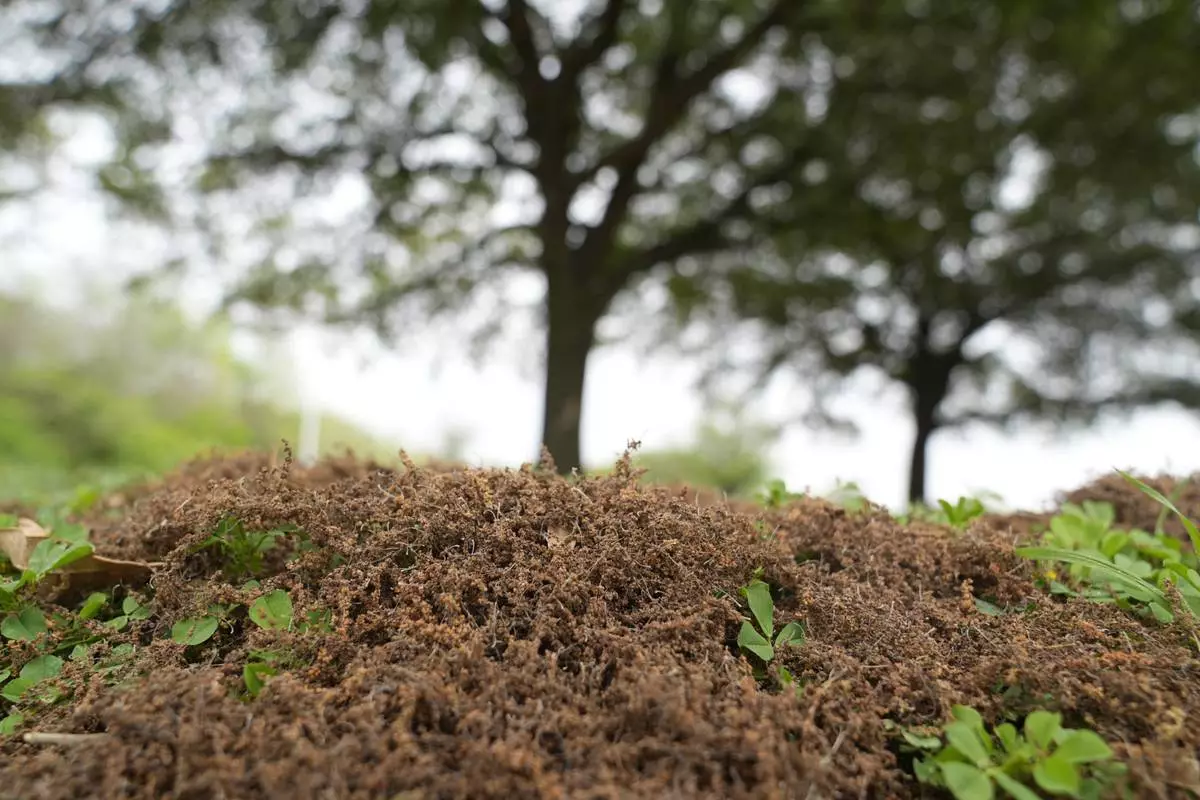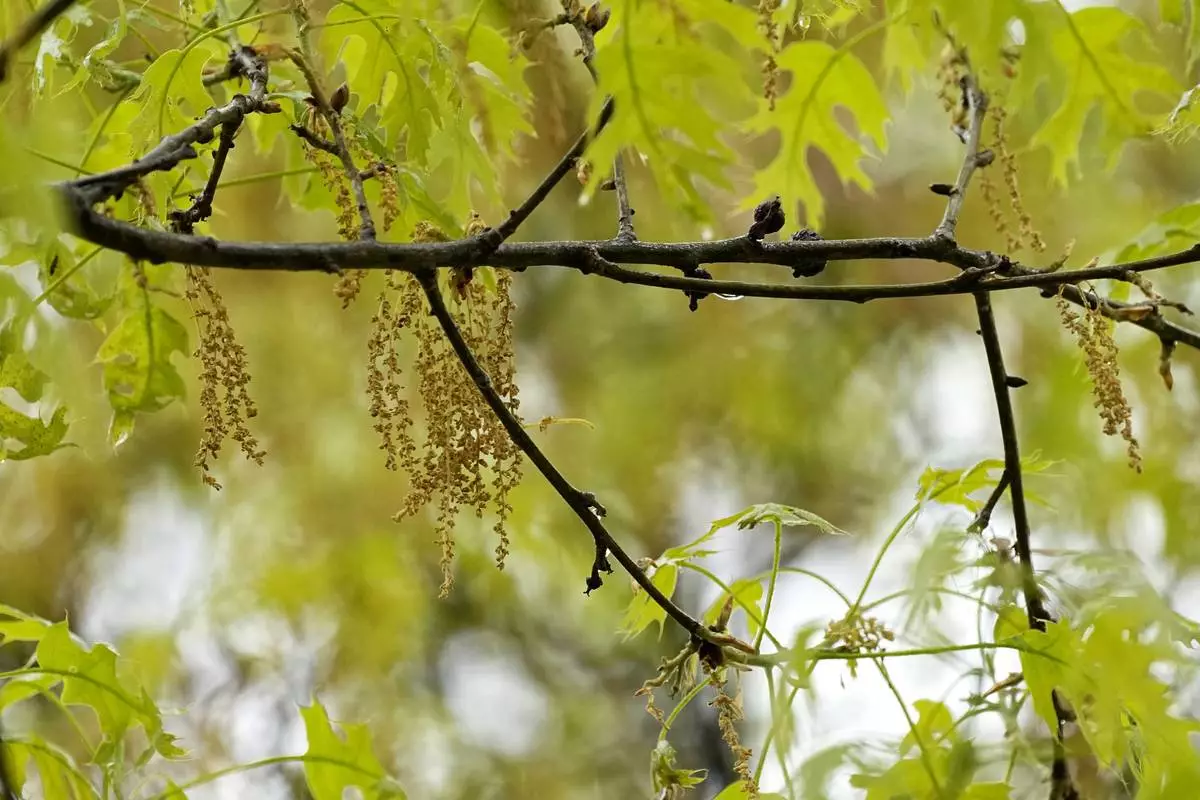The civilian death toll in the crackdown by the Myanmar junta has reached 550 since the Feb. 1 coup, a human rights group said Saturday.
Of those, 46 were children, according to Myanmar's Assistance Association for Political Prisoners. Some 2,751 people have been detained or sentenced, the group said.
Threats of lethal violence and arrests of protesters have failed to suppress daily demonstrations across Myanmar demanding the military step down and reinstate the democratically elected government.
Late Friday, armed plainclothes police took five people into custody after they spoke with a CNN reporter in a Yangon market, local media reported, citing witnesses. The arrests occurred in three separate incidents.
Two women reportedly shouted for help as they were being arrested, Myanmar Now news service reported. One police officer, who was carrying a gun, asked if “anyone dared to help them," a witness told the news service.
“They pointed their pistols at everyone—at passersby and at people in the store,” a witness said of two police officers who forcibly took away two other women in the market.
Meanwhile, the Karen National Union representing the ethnic minority rebel group that has been fighting the government for decades condemned “non-stop bombings and airstrikes” against villages and "unarmed civilians” in their homeland along the border with Thailand.
“The attacks have caused the death of many people including children and students, and the destruction of schools, residential homes, and villages. These terrorist acts are clearly a flagrant violation of local and international laws,” the group said in a statement.
In areas controlled by the Karen, more than a dozen civilians have been killed and over 20,000 displaced since March 27, according to the Free Burma Rangers, a relief agency operating in the region.
About 3,000 Karen fled to Thailand, but many returned under unclear circumstances. Thai authorities said they went back voluntarily, but aid groups say they are not safe and many are hiding in the jungle and in caves on the Myanmar side of the border.
More than a dozen minority groups have sought greater autonomy from the central government for decades, sometimes through armed struggle. Several of the major groups — including the Kachin, the Karen and the Rakhine Arakan Army — have denounced the coup and said they will defend protesters in their territories.
After weeks of overnight cutoffs of internet access, Myanmar’s military on Friday shut all links apart from those using fiberoptic cable, which was working at drastically reduced speeds. Access to mobile networks and all wireless — the less costly options used by most people in the developing country — remained blocked on Saturday.
The coup reversed years of slow progress toward democracy in Myanmar, which for five decades languished under strict military rule that led to international isolation and sanctions. As the generals loosened their grip, culminating in Aung San Suu Kyi’s rise to leadership in 2015 elections, the international community responded by lifting most sanctions and pouring investment into the country.
Allergy season can bring misery to tens of millions of Americans each year.
Tree, grass, and other pollens can cause runny noses, itchy eyes, coughing and sneezing.
Where you live and what you're allergic to can make a big difference in how bad your allergies are, but there are many things you can do to feel better.
Here are some tips from experts to keep allergies at bay — maybe even enough to allow you to enjoy the outdoors.
There are three main types of pollen. Earlier in the spring, tree pollen is the main culprit. After that grasses pollinate, followed by weeds in the late summer and early fall.
Some of the most common tree pollens that cause allergies include birch, cedar, cottonwood, maple, elm, oak and walnut, according to the Asthma and Allergy Foundation of America. Grasses that cause symptoms include Bermuda, Johnson, rye and Kentucky bluegrass.
The best and first step to controlling allergies is avoiding exposure. That’s easier said than done when it's nice out.
Start with keeping your windows closed at home and in the car, avoiding going out when pollen counts are highest and changing clothes when you get home. The same masks that got us through the pandemic can protect you from allergies — though they won't help with eye symptoms.
Pollen trackers can help with planning. The American Academy of Allergy Asthma and Immunology tracks levels through a network of counting stations across the U.S. Counts are available at its website and via email.
You can't fight an enemy you don't know.
Since many Americans are allergic to several things at once, the first thing to figure out is what specifically you’re allergic to, said Dr. Nana Mireku, an allergist in the Dallas-Fort Worth area.
Over-the-counter nasal sprays can help relieve symptoms, but they take a while to kick in, so it’s best to start them in early in the season, said Dr. Rachna Shah, an allergist and director of the Loyola Medicine Allergy Count.
Antihistamines are another option. Shah said she’s seen some patients benefit from switching to a similar brand if one stops working, but said that there isn’t much broader data to back the recommendation.
For young children and people who have to take many different allergy medications, immunotherapies in the form of shots and oral drops can help desensitize the immune system to allergens, treating symptoms at their root.
The Asthma and Allergy Foundation of America issues an annual ranking of the most challenging cities to live in if you have allergies, based on over-the-counter medicine use, pollen counts and the number of available allergy specialists. This year, the top five were Wichita, Kansas; Virginia Beach, Virginia; Greenville, South Carolina; Dallas; and Oklahoma City.
If you've been thinking it started earlier and seems longer this year, you're on to something.
Shah usually starts looking at pollen counts in the Chicago area in April. But this year, she peeked at her data in mid-February, and tree pollen was already at a “moderate” level.
“This season has been so nuts,” she said. “Granted, it was a pretty mild winter, but I didn’t expect it to be so early.”
Shah said she believes this season will be longer than other years, assuming the weather remains warm.
Experts say climate change has led to longer and more intense allergy seasons.
The Associated Press Health and Science Department receives support from the Robert Wood Johnson Foundation. The AP is solely responsible for all content.

FILE - Tree pollen pods lay in a pile at a park in the Dallas suburb of Richardson, Texas, Thursday, March 21, 2024. The Asthma and Allergy Foundation of America issues an annual ranking of the most challenging cities to live in if you have allergies, based on over-the-counter medicine use, pollen counts and the number of available allergy specialists. In 2024, the top five were Wichita, Kansas; Virginia Beach, Virginia; Greenville, South Carolina; Dallas; and Oklahoma City. (AP Photo/LM Otero, File)

FILE - An oak tree with new leaf growth also shows pollen and a drop of water hanging among the branches at a park in Richardson, Texas, Thursday, March 21, 2024. There are three main types of pollen. Earlier in the spring, tree pollen is the main culprit. After that grasses pollinate, followed by weeds in the late summer and early fall. (AP Photo/Tony Gutierrez, File)











